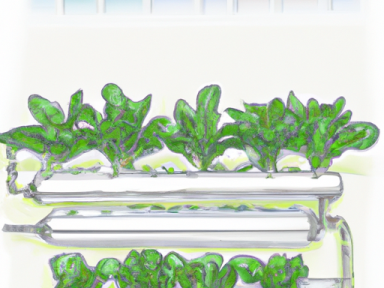The Basics of Hydroponic Gardening
In times of crisis or disaster, being self-reliant and prepared is crucial. One way to ensure a steady food supply is through hydroponic gardening. Hydroponics allows you to grow plants without soil, making it an efficient and sustainable method of cultivation. By understanding the basics of hydroponic gardening and setting up your own hydroponic system, you can be well-prepared for any situation that may disrupt traditional food sources.
What is Hydroponic Gardening?
Hydroponic gardening is a method of growing plants without traditional soil. Instead, plants are grown in a nutrient-rich water solution, providing all the necessary elements for their growth. This method allows plants to grow faster and yield higher quantities of produce compared to traditional soil-based gardening.
Setting Up a Hydroponic System
Creating your own hydroponic system may seem daunting, but it can be relatively simple once you understand the basics. Here are the steps to set up a basic hydroponic system:
- Choose the type of hydroponic system: There are various types of hydroponic systems to choose from, including deep water culture, nutrient film technique, and drip irrigation. Research each type and select the one that best suits your needs and available space.
- Find a suitable location: Your hydroponic system will require adequate space with access to natural or artificial light. Ensure there is proper ventilation to prevent the growth of mold or mildew.
- Secure the necessary equipment: Depending on the type of system you choose, you will need containers, growing medium, nutrient solution, a pH testing kit, and grow lights.
- Prepare the growing medium: The growing medium provides support to the plants in the absence of soil. Common options include perlite, vermiculite, or coco coir. Clean and sterilize the medium before use to avoid introducing harmful pathogens.
- Mix the nutrient solution: Hydroponic plants require a balanced nutrient solution to thrive. Follow the instructions provided with your chosen nutrients and adjust the pH level to ensure optimal nutrient uptake by the plants.
- Plant and maintain: Plant your chosen seeds or seedlings in the growing medium, ensuring they have access to the nutrient solution. Regularly monitor the system’s pH and nutrient levels, adjusting as necessary. Provide adequate light and maintain the temperature and humidity levels suitable for your plants.
Advantages of Hydroponic Gardening
Hydroponic gardening offers numerous benefits, particularly in times of crisis or limited resources:
- Water Efficiency: Hydroponics uses significantly less water compared to traditional soil-based gardening. This makes it an ideal option in regions with limited water supply.
- No reliance on soil quality: Since hydroponic plants do not grow in soil, you do not have to worry about poor soil quality or contaminated land.
- Faster growth and higher yields: Plants grown hydroponically tend to grow faster and produce higher yields due to the optimized nutrient availability.
- Year-round cultivation: With the right setup, hydroponic gardening allows for year-round cultivation, providing a constant source of fresh produce regardless of the season.
In these uncertain times, taking actions to ensure your self-reliance is of utmost importance. By familiarizing yourself with hydroponic gardening and setting up your own system, you can be prepared for any challenges that may arise. Embrace the power of self-reliance and cultivate your own food supply with hydroponics. Don’t wait until it’s too late. Start now and gain the skills you need to thrive in any situation.




GIPHY App Key not set. Please check settings